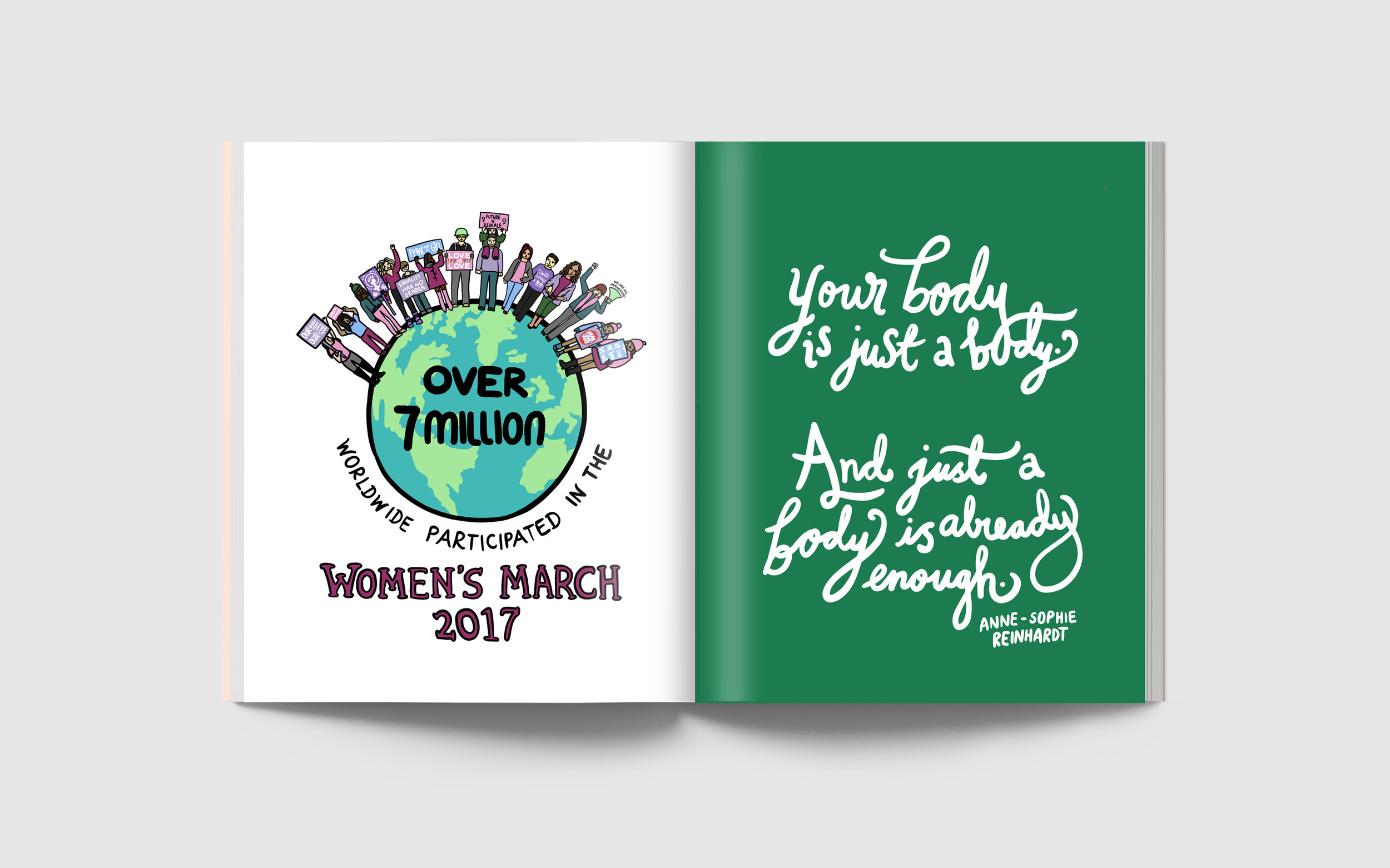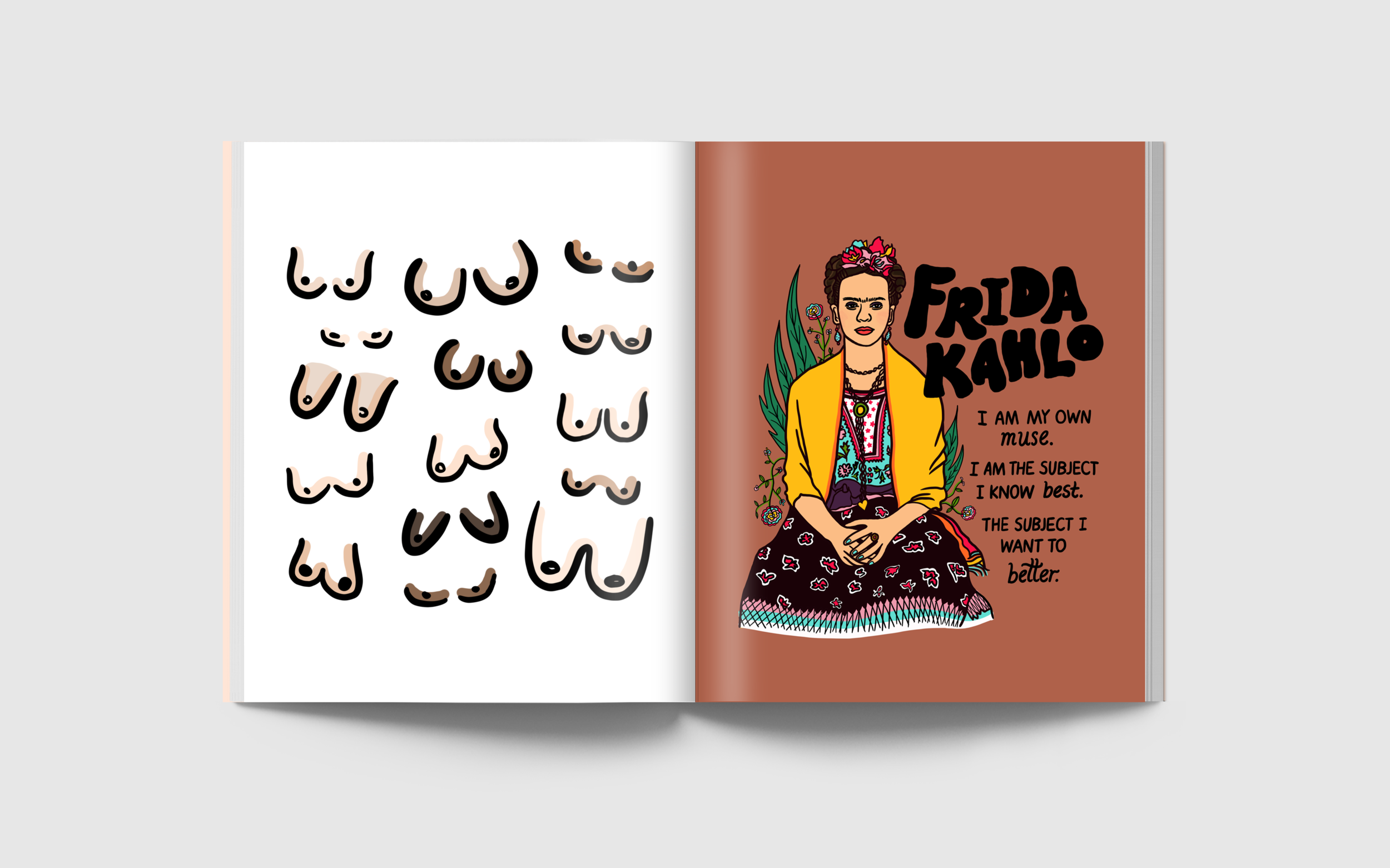Context
My journey toward this project began when I moved from Hong Kong to New York for my undergraduate degree. This transition exposed me to a dramatically different political awareness and social justice landscape. Witnessing the 2017 Women's March firsthand and following the resurgence of the #MeToo movement fundamentally shifted my perspective on gender equality issues.
These experiences were further deepened during summer 2018 when I joined a women's empowerment nonprofit as a designer. Creating materials aimed at developing women into social change agents through leadership training and community service connected me directly with the impact of thoughtful advocacy.
I realized that while statistical information about gender inequality was abundant, it often remained inaccessible—either buried in academic reports or presented in ways that failed to emotionally connect with audiences. Additionally, most resources targeted adults, with few bridging generational gaps to facilitate family discussions about these critical issues.
Process & Objectives
The project began with extensive research, gathering reliable data from global organizations about women's experiences across four key areas: health, education, workplace, and body image. This data collection phase involved evaluating sources for accuracy and relevance, then determining which statistics most effectively illustrated systemic disparities.
Rather than creating a passive reading experience, I designed the book with multiple interactive elements:
Journaling sections that prompt personal reflection on the presented data
Tear-out postcards allowing readers to share messages with loved ones
Sticker pages with infographics and illustrations that can be placed in public spaces
Quotes from iconic female figures that provide historical context and inspiration
The visual language deliberately employs bright colors and energetic illustrations to create an approachable entry point to serious topics.
Delivery
The final product is a vibrant, interactive book that balances statistical information with engaging visuals and participation opportunities. Key features include:
Data-driven infographics across four thematic areas (health, education, workplace, body image)
Illustrated quotes from influential women throughout history
Interactive journaling prompts encouraging personal reflection
Tear-out postcards designed to be sent to loved ones
Sticker pages containing both decorative elements and informational graphics
A consistent visual system using color-coding, icons, and illustration styles to organize complex information
The book serves simultaneously as an educational resource, an advocacy tool, and a catalyst for intergenerational discussions about gender equality and social justice.
Impact & Reflection
The project aims to bridge generational gaps in discussions about gender equality. While designed to be accessible to children as young as seven—who grasp concepts of fairness intuitively even before understanding complex sociopolitical systems—the book also engages adults through its data rigor and actionable components.
By combining statistical information with interactive elements, Raise My Voice transforms passive learning into active participation. The tear-out components extend the book's impact beyond the individual reader, creating opportunities for community engagement and awareness-building.
This thesis represents my belief that design can be both beautiful and purposeful—that aesthetic appeal can amplify rather than diminish serious messages. It demonstrates how visual communication can translate complex data into accessible knowledge that inspires action across generations.
























